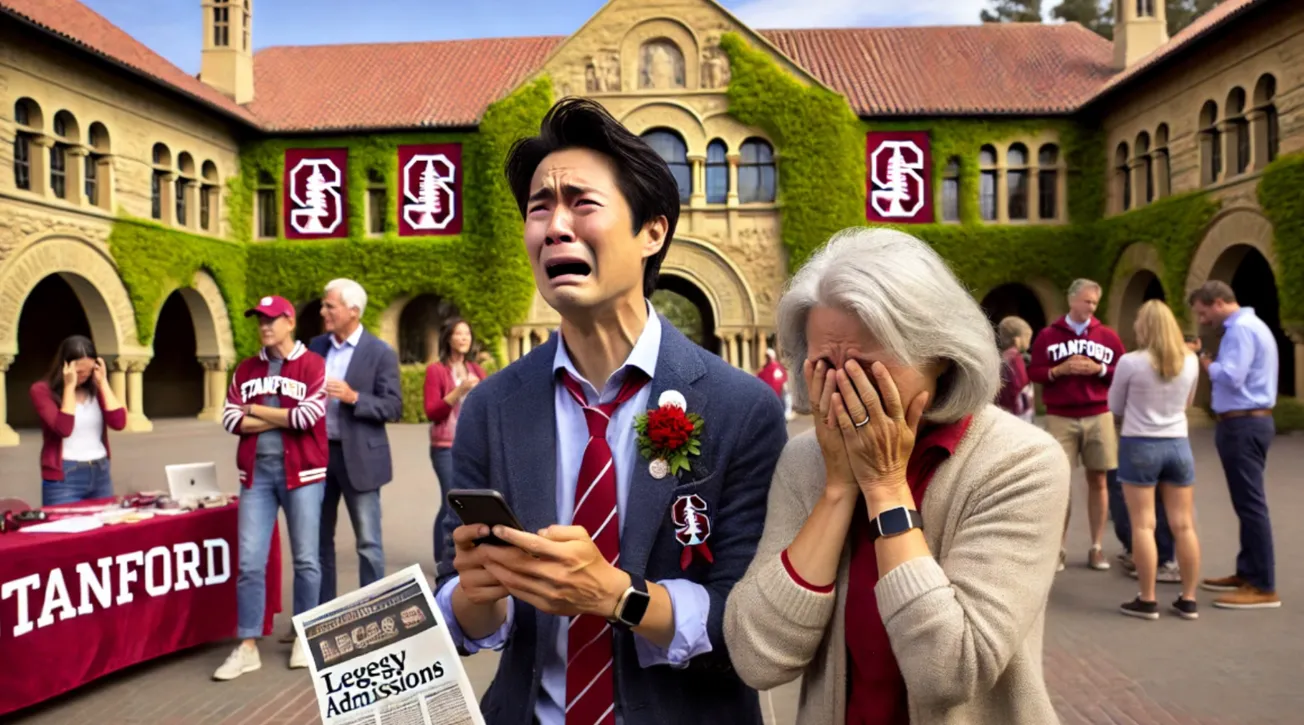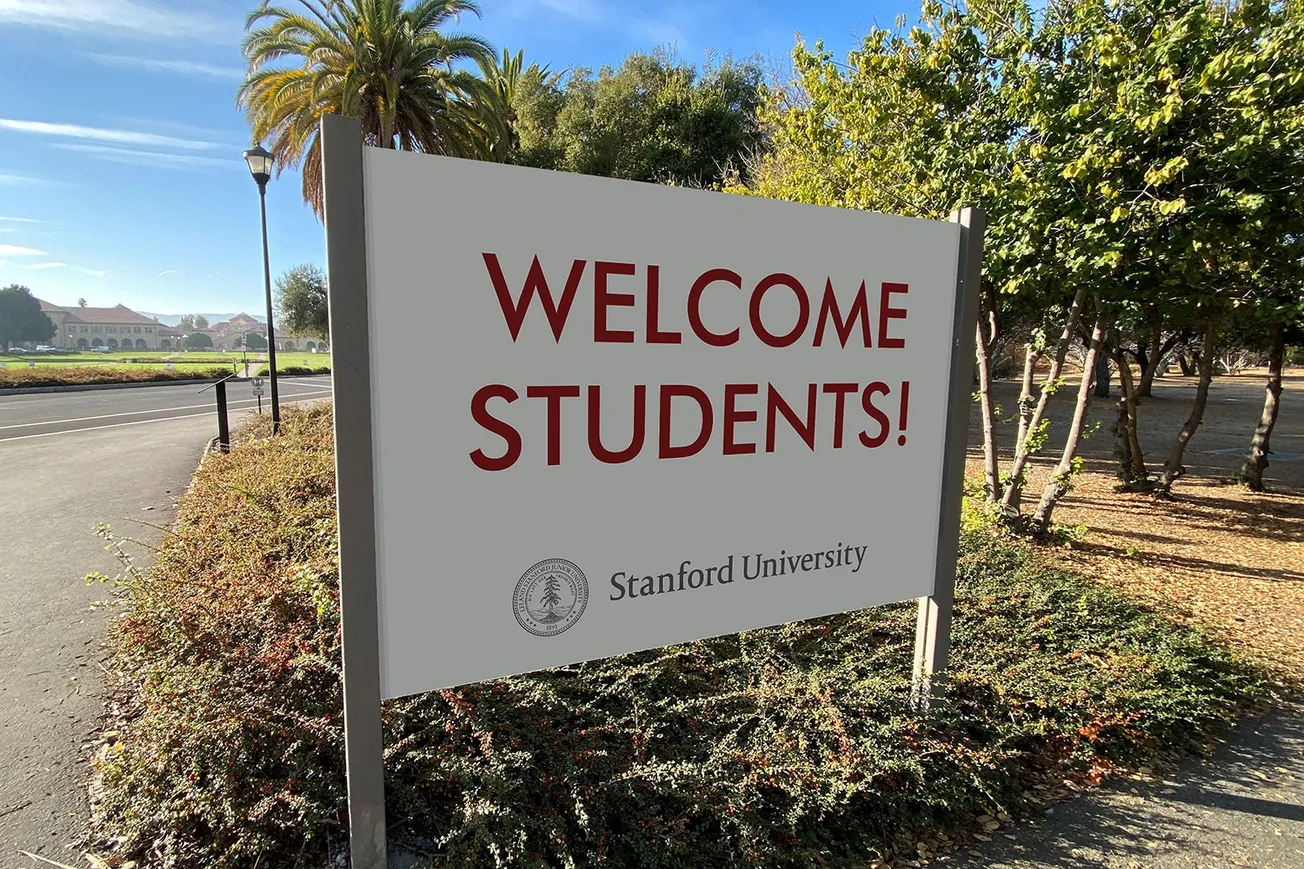Table of Contents
Earlier this month, California governor Gavin Newsom signed a bill that outlaws preferences for legacy students — applicants who are the children of alumni — at private colleges and universities. This bill is designed to target schools with strong legacy preferences such as Stanford and the University of Southern California. Excluding CalTech, these two schools are the most competitive private universities in California.
Legacy preferences are unpopular across both sides of the aisle: Clarence Thomas described them as “poisoning” the admission process, and Virginia Democrat Tim Kaine and Indiana Republican Todd Young co-sponsored a bill to penalize their use. In spite of this, the vast majority of elite colleges retain their use, and around fifteen percent of undergraduate students at most Ivy League schools (in addition to Stanford) are legacy or donor admits. The Supreme Court’s decision in Students for Fair Admissions (SFFA) v. Harvard has made legacy admissions even more unpopular, as legacy admits tend to be whiter and wealthier than their non-legacy peers.
Ironically, defenders of legacy admissions employ many of the same arguments that supporters of affirmative action do. Their arguments that legacy preferences are within the scope of the school’s autonomy and academic freedom, only form a “small part” or “one factor among many” in the admissions process, and allow for the selection of students who will provide some intangible value to the school’s culture sound eerily similar to apologists’ justifications for blatant racial discrimination. We believe that implementing a blanket boost for the children of alumni harms both the quality of the university's student body and other talented students in the application process who are necessarily passed over.
Admissions to any elite university, especially at a school as competitive as Stanford, is a zero-sum game, with only a finite number of spots in each freshmen class. This reality was also acknowledged in the case SFFA v. Harvard, which determined that “positive discrimination” cannot exist in any selective college admissions process. Stanford’s fundamental goal in its undergraduate class is to produce members of the American elite by marrying meritorious and deserving students with opportunity. While a pure meritocracy like China’s GaoKao system should not be replicated by Stanford, we believe that merit must be the driving factor in the university’s admissions process.
While academics and standardized testing should play an important role in this process, Stanford should implement criteria that selects for future leaders and creates the most interesting and productive class possible. Legacy admissions inherently dilutes this goal.
At Stanford, the defenses we hear of legacy admissions mostly revolve around the value their familial history with the university brings to the school. Whether that be cultural or financial, schools often claim a necessity for admitting children of alumni based on vague claims of school autonomy and intangible impacts to the alumni network and community. However, in our experience, while many legacy admits are certainly very deserving of their spots and contribute heavily to Stanford’s social scene, many others tend to slack off and not take their education seriously. In other words, positive qualities from parents that led them to become successful Stanford graduates are not uniformly passed onto their children.
If legacy students truly do have qualities that make them uniquely be able to add value to Stanford’s class, those qualities should shine through their application and enable them to be admitted with or without formalized legacy preferences. An automatic legacy boost should not be justified by using talented students who happen to be children of Stanford graduates and would have been admitted anyway, as it also allows mediocre students to get an undeserved boost and slip through the cracks.
Are these really the students that need to be given a leg up by our admissions system? Wealth is one of the strongest correlators for elite college admissions, especially at Stanford, and Stanford alumni naturally tend to end up in the upper echelons on income. This is before considering all the additional subtle advantages conferred to children of alumni. The college admissions process is gameable—wealth purchases education at elite feeder schools such as Harvard-Westlake and Phillips Exeter, tutors, extracurricular pet projects, “nonprofits,” and the like.
Having a parent who has gone through the gauntlet gives someone a huge boost when navigating the esoteric and often unintuitive world of extracurriculars, essays, and standardized tests. This shows in the types of students admitted.
Stanford’s official disclosures on legacy admissions revealed that no children of alumni who did not meet admissions criteria were admitted to the university. However, given that Stanford could fill its class multiple times over with students who meet basic qualifications (and indeed selects only students with exceptional applications), it is clear that for many students, their legacy status is what got them into Stanford.
While not a direct comparison, after Johns Hopkins University dropped legacy admissions, the share of students who had a parent who attended the university was reduced by more than three-fold. Given the abundance of over-qualified and talented students applying to the university, relatively lackluster children of Stanford alumni should not be given an automatic boost. As seen in Harvard’s case, while legacy applicants tend to be more qualified than average applicants, legacy admits are actually less qualified than the average admitted student.
That's a serious problem. Legacy is a flagrant disregard of meritocracy, and while the college admissions process is far from perfect, legacy is one of the most egregious and easily removable blemishes on the whole process.
Removing legacy admissions does not just mean fewer tears from some high-strung seniors. There are serious consequences to continuing this practice. Despite huge leaps in access to education, students from the bottom 20% of income have decreased in the last forty years at Stanford, a fact that is quite regrettable considering how elite schools are an incredible catalyst for social mobility. Students from the bottom fifth of income who attend Stanford have a 63% chance of ascending to the top fifth of earners as adults. These students are some of the most responsible for Stanford’s greatness. Some of the least important, we’d wager, are the children of wealthy individuals who use the Stanford brand to get a cushy consulting or investment banking job. Admissions slots at elite schools are a scarce commodity, and every undeserving legacy admit takes a spot from a talented student who could bring value to the university and enhance its reputation.
Stanford is unique among its peer institutions for attracting entrepreneurial and innovative students, and giving a blanket legacy boost to students who would get the same jobs attending Cornell, UT Austin, or a UC (yes, even Berkeley) hobbles our potential.
At the end of the day, there remains much to reform in the college admissions process. Legacy admissions very well may benefit meritorious children of alumni who deserve to inherit Stanford’s legacy. However, in a truly fair admissions process that still selects for extraordinary qualities that make Stanford students renowned across the globe, legacy in and of itself cannot be a factor. Our most prominent alumni, from Larry Page to Sandra Day O’Connor, did not rely on their parents’ connections to get in, and neither should the next generation of Stanford leaders. Newsom’s law, though far from making Stanford’s process truly fair and objective, is a step in the right direction.





